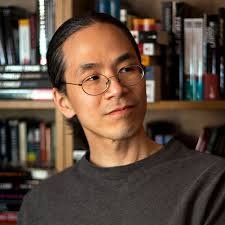The Blurred Line Between the AI and Art
Written by: Ashley Hu
In the midst of an era where disciplinary boundaries are vanishing, Chelsi Cocking's transformation from conservative artist to innovative computational designer is an emblem of the overwhelming integration of design and computer science. She grew up amidst the lively backdrop of Jamaica, surrounded by color and visual appeal, and thus instilled since childhood an extraordinary passion for design. She discovered at MIT the potential of technology as a medium for art, using code to create dynamically interactive visual effects. Her work contradicts the stereotypical idea of art and STEM being in separate universes. Instead, it illustrates how they can enhance and complement each other.
Having grown up in Jamaica, surrounded by vibrant color and dramatic visual sensibilities, she was instilled with an early passion for design. In MIT, she discovered that code was more than a technical tool but a new kind of paintbrush that had the capability to bring art to life through motion, interaction, and logic. Her practice does not necessarily combine two disciplines: it shows they've always had the ability to speak the language.
Chelsi Cocking
That intersection resonates with me. As both an artist and a programmer, I’ve explored it in my own way, from hand-drawn illustrations and digital painting to interactive visuals built with code. Creative coding feels like a natural extension of art. It adds structure and interactivity, but the emotion still stays at the center. There’s something exciting about building a piece that responds to the viewer or evolves over time, almost like it’s alive.
But that feeling tends to fade with AI-generated art. I’ve tried tools like style transfer, where a drawing takes on the look of a Van Gogh or a Picasso. It’s technically impressive and sometimes fun, but it often feels more like applying a filter than engaging in a creative process.
That's where my unease begins. When AI produces complete images based on prompts and training data, the line between tool and creator blurs. Art, for my money, has always been about choices. Every brush stroke or line means something, either intentionally or unintentionally. AI doesn't experience or recall. It doesn't consider a block out or ask itself questions. That's what makes human art so incredibly potent. It's emotional, imperfect, and personal.
Ted Chiang’s The New Yorker article "Why AI Isn't Going to Make Art" also refers to AI simiilairy. Machines can copy style, not human intent. They can absorb form, not feeling. No matter how sophisticated, technology will never be able to replicate the crazy, mercurial, sublime quality of human imagination.
Ted Chiang
With the future ahead of us, the intersection of art and computation will only increase, but direction is crucial. While technology can make it more possible and help artists to tell new kinds of stories, the human heart is still the creation of art. As an artist, I do not see a future where AI dominates the art field. Instead, I see a future where we employ movement, code, and digital technology to bring our own ideas into the world in new forms. Maybe art will no longer be static. Maybe it'll change, react, or shift. But, at the end of the day, it will always come from a heart that is human: creating, feeling, and expressing through art.


